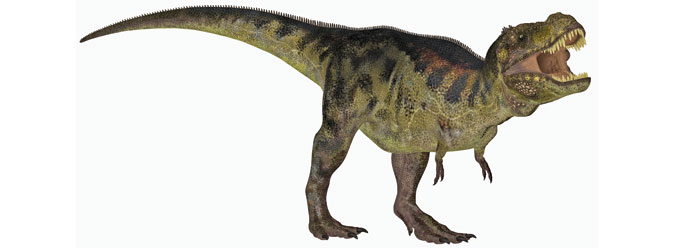Were dinosaurs noisy? Did dinosaurs honk nasally like Chewbacca in Star Wars? Did dinosaurs make moaning noises like mourning doves and owls, or did they wail like bagpipes?
Are there any clues about dinosaur sounds in Scripture or science? In both, actually. If this answer seems surprising it shouldn’t be, because both Scripture and science provide trustworthy evidence that dinosaurs were anything but silent.
But how can the Bible tell us anything about dinosaur sounds? The word “dinosaur” does not appear in English translations. But that term was not coined until 1841, so we wouldn’t expect to find it in the King James Bible, which was published in 1611. Obviously, before 1841 the animals known today as dinosaurs would have been called something else—most likely dragons or monsters, both of which appear in the English Bible repeatedly, translating the related Hebrew nouns tannim, tannin, and tannoth.1
As creation scientists have shown, using an open-Bible approach to scientific inquiry, there is a realistic connection between the “dragons” of old and the “dinosaurs” studied today.2 Thus, it is not surprising that the once-living dragons mentioned in Scripture (and occasionally reported by later eyewitnesses, sometimes even after the Viking Age) would be called dinosaurs when their bones are found today.2
But do dinosaur bones, or allusions to dragons in Scripture, disclose anything about dinosaur noises?
Empirical science observations—such as examining the remains of dinosaur bones—can corroborate the idea that some dinosaurs could express nasal vocalizations that might have sounded something like the low-frequency tones of a trombone, a bagpipe chanter, or a medieval krumhorn:
Lambeosaurine [hadrosaurs with hollow crests containing parts of the nasal cavity] dinosaur crests are judged to have been conducive to resonation on the basis of an acoustic analysis of the structure of the nasal cavity.…[T]he elongated nasal passages acted as resonators [similar to] a Fennoscandian musical instrument known as a krumlur or krumhorne.3
But, besides anatomical studies of dinosaur bones, is there any reliable historical evidence from eyewitness observations to prove the forensic fact that dinosaurs were noisy?
Yes. The prophet Micah said he would “wail and howl” and “make a wailing” like tannim (Micah 1:8). The Hebrew noun tannim is routinely translated as “dragons” in English.1 So if the biblical term “dragons” equals “dinosaurs,” Micah is indicating that at least some dinosaurs were known for their howling or moaning-like “wailing.”
In fact, the nouns tannin and tannim (usually translated “dragons”) derive from the Hebrew root verb tanah, which describes a sad, wailing lamentation (see Judges 11:40), meaning “to wail, moan, mourn, or lament.”1 So the Hebrew noun tannim literally describes monsters known for wailing and moaning. Since Scripture shows that dragons (tannim) were well-known for their sad-sounding wailing (Micah 1:8), we should not be surprised when anatomy-analyzing paleontologists conclude that lambeosaurine hadrosaurs had the right anatomy for emitting low-frequency nasal sounds, perhaps something like low woodwind tones from a Scandinavian krumhorn or Wendish bagpipes.
References
- Wigram, G. V. 2001. The Englishman’s Hebrew Concordance to the Old Testament. Peabody, MA: Hendricksen Publishers (reprint of 1874 3rd edition), 1352-1353. See also Young, R. 1984. Young’s Analytical Concordance to the Bible. Peabody, MA: Hendrickson Publishing (reprint of 1879 edition), 270. The Hebrew noun tannim (“dragons” in Micah 1:8) is translated into Greek as drakôn in the Septuagint.
- Bill Cooper documents and discusses historical records of human encounters with strange creatures during various centuries after Christ, involving detailed descriptions of wild animals that today would be called dinosaurs. (Cooper, W. R. 1995. After the Flood. Chichester, UK: New Wine Press, 130-161.) This historical analysis involves investigating events of the no-longer-observable past, so forensic science standards are relevant.
- Weishampel, D. B. 1981. Acoustic Analyses of Potential Vocalization in Lambeosaurine Dinosaurs (Reptilia: Ornithischia). Paleobiology. 7 (2): 252-261. This paleontological research was provided by ICR’s Dr. Tim Clarey.
* Dr. Johnson is Associate Professor of Apologetics and Chief Academic Officer at the Institute for Creation Research.




















